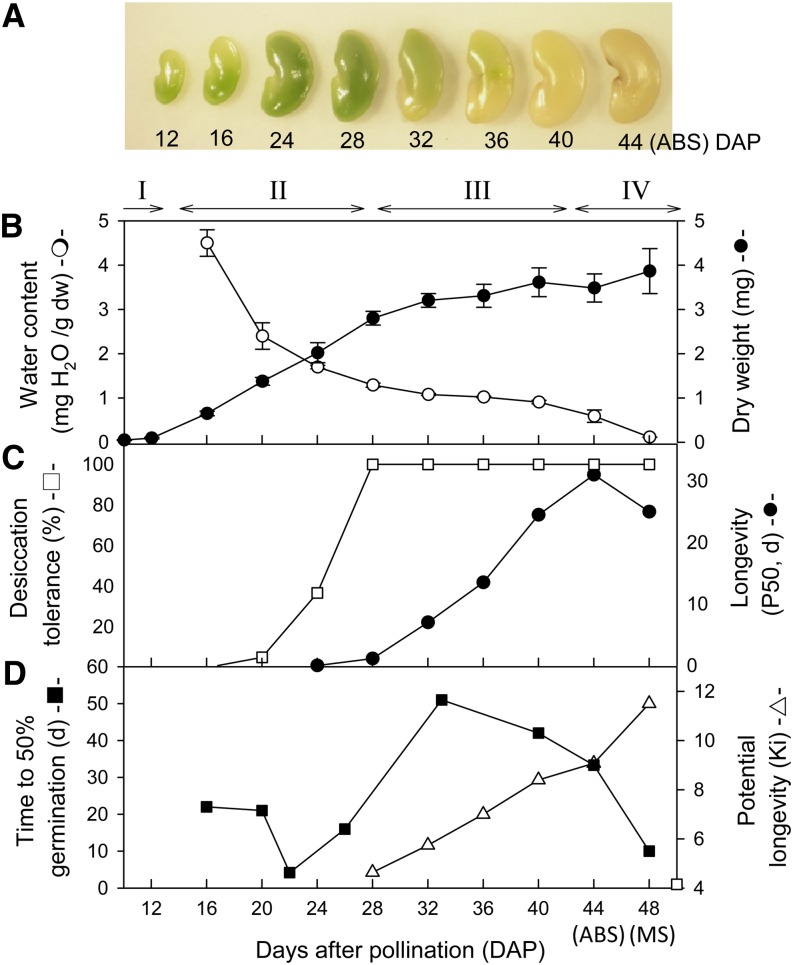Figure 1.
Physiological characterization of seed maturation of M. truncatula. Seed development is divided into four major phases: embryogenesis (I), seed filling (II), late maturation (III), and pod abscission (IV). A, Time course of seed development. B, Water content and dry weight (dw) changes. C, Acquisition of DT, measured as the percentage germination after rapid drying to 43% relative humidity, and longevity (P50), determined as the time to reduce viability to 50% under storage at 75% relative humidity and 35°C. D, Changes in initial viability (or potential longevity [KI]), determined from the viability equation, and germination speed or dormancy, determined as the time required to germinate 50% of seeds at 20°C. Part of the data were derived from Chatelain et al. (2012). [See online article for color version of this figure.]

